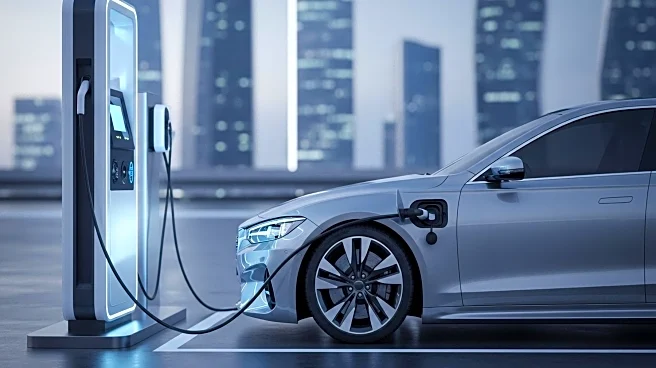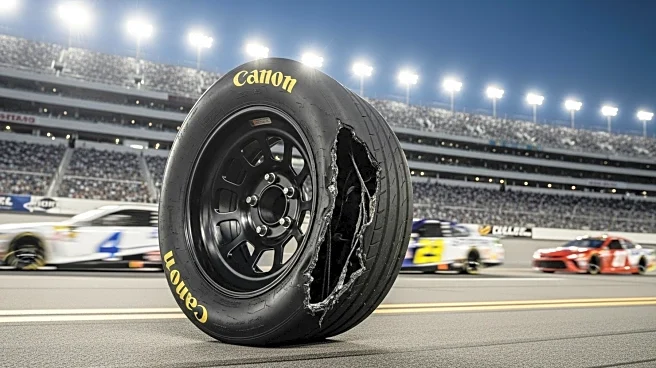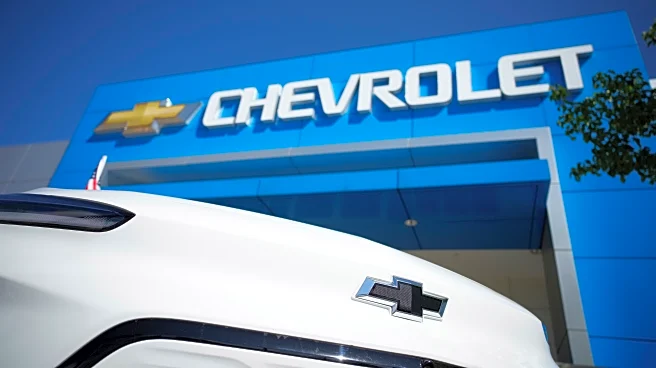What's Happening?
The 2025 Petit Le Mans concluded with the No. 31 Cadillac securing victory, while Porsche clinched the IMSA title. The Aston Martin Valkyrie made headlines by finishing in second place, marking its first-ever podium finish. The race began with the No. 60 Meyer Shank Acura leading, closely followed by the No. 31 Whelen Cadillac. Early incidents included a spin by the No. 34 Conquest Racing Ferrari, causing significant damage and a full course yellow. Throughout the race, various teams faced challenges, including driver changes due to illness and mechanical issues. The No. 6 Porsche Penske had to adjust its lineup, with Laurens Vanthoor stepping in for Julien Andlauer. The race saw intense battles across different classes, with strategic pit stops and penalties affecting the outcomes. The No. 31 Cadillac, driven by Earl Bamber, Jack Aitken, and Frederick Vesti, ultimately took the top honors, while the No. 6 Porsche of Matthew Campbell and Mathieu Jaminet secured the GTP title.
Why It's Important?
The results of the Petit Le Mans have significant implications for the IMSA racing series. Cadillac's victory highlights its competitive edge in endurance racing, while Porsche's title win underscores its consistent performance throughout the season. The Aston Martin Valkyrie's podium finish is a milestone for the brand, potentially boosting its reputation and marketability in motorsports. These outcomes can influence team strategies, sponsorship deals, and the development of racing technology. The race also showcased the importance of adaptability and strategic planning, as teams navigated driver changes and mechanical issues. The success of these teams may attract more investment and interest in the IMSA series, impacting the broader motorsports industry.
What's Next?
Following the Petit Le Mans, teams will likely analyze their performance to refine strategies for future races. The victory for Cadillac and the title for Porsche may lead to increased focus on their racing programs, with potential adjustments in team composition and vehicle development. Aston Martin's achievement could prompt further investment in its racing division, aiming to build on its success. The IMSA series will continue to evolve, with teams preparing for upcoming events and addressing any technical or strategic challenges encountered during the race. Stakeholders, including sponsors and manufacturers, will assess the implications of the race results on their involvement in the series.
Beyond the Headlines
The race highlighted the intricate dynamics of endurance racing, where strategy, teamwork, and adaptability are crucial. The mechanical issues faced by several teams underscore the importance of reliability and innovation in vehicle design. The event also reflects the growing competitiveness in the IMSA series, with new entrants like the Aston Martin Valkyrie making significant strides. This could lead to increased diversity in the types of vehicles and technologies used in the series, potentially influencing the future direction of motorsports. The race serves as a reminder of the unpredictable nature of endurance racing, where outcomes can shift dramatically due to unforeseen circumstances.













